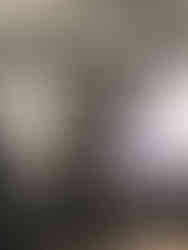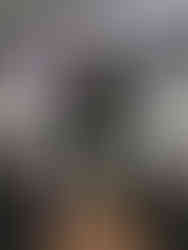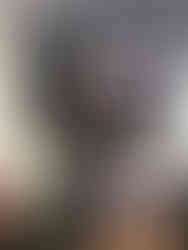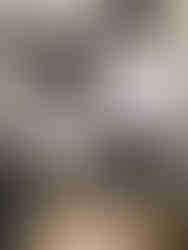Flexibility and Mobility For Lifters - Volume 7
- Dean Collins

- Jan 11, 2019
- 6 min read
Now we are reaching the top, nearing the end of our adventure. On this section we are gonna go into another bro favourite, that is the shoulders or boulders as some may like to call it.
Now I'm sure you are thinking the shoulder is made up of one joint, the ball in socket joint, this is wrong and it is made up from two different joints which work along side each other to allow it to be the most flexible joint in the human body. The first joint being the glenohumeral joint or more commonly known as the ball and socket joint, formed from the humerus, scapula and clavicle. Our second joint is whats known as the acromioclavicular joint, which is made up from the lateral end of the clavicle and accordion process of the scapula. It is a gliding joint which allows for extra mobility around the shoulder joint. Both of these joints come with tendons, cartilage and rotator cuff muscles to help protect it and allow stabilisation around the shoulders.
So the shoulders still being a synovial joint we can perform flexion, extension, adduction, abduction, internal and external rotation.
Now the basics are over, lets get down to our brief anatomy lesson.
Muscles:
Shoulder Flexion:
Prime Mover - Anterior deltoid, pectoralis major
Synergists - coracobrachialis, serratus anterior
Antagonist - latissimus dorsi
Shoulder Extension:
Prime Mover - Posterior deltoid, latissimus dorsi, pectoralis major
Synergists - teres major
Antagonist - deltoids
Shoulder Adduction:
Prime Mover - Latissimus dorsi, pectoralis major, coracobrachialis
Synergists - teres major, teres minor
Antagonist - deltoids
Shoulder Abduction:
Prime Mover - medial deltoid
Synergists - supraspinatus, infraspinatus
Antagonist -latissimus dorsi, pectorilais major
Shoulder Internal Rotation:
Prime Mover - pectoralis major, latissimus dorsi, anterior deltoid
Synergists - teres major, subscapularis
Antagonist - trapezius, posterior deltoid
Shoulder External Rotation:
Prime Mover - trapezius, posterior deltoid
Synergists - infraspinatus, teres minor
Antagonist - pectoralis major, latissimus dorsi
Testing:
Lets talk about testing shoulder flexion, it’s pretty straight forward and doesn't really require any equipment for it all you gotta do is lay on the floor or a table if you've got one. You begin by bending your knees and having your feet flat on the floor, engage the core and pull the ribcage down to the ground so your whole back is on touching. Have your palms facing in with straight arms, raise your hands overhead until your hands touch the table or ground. You want to be ale to do this without your back arching or lifting.
The other test we have for the shoulders are internal and external rotation. For this you will need to be seated upright. Again you must engage the core, now without twisting your torso place your right hand on the back of your neck and then your backside of the left hand on your lower back. Now without breaking posture and arching move your hands as close together as you can, aiming to be about a fists width apart. Make sure to repeat on the other side too.
Strengthening:
First exercise I will recommend is probably pretty obvious, it’s basic, allows you to keep the shoulders mobile and flexible through a full range of motion. This is the standard overhead press. The reason I’ve chosen this is because it’s great for all round shoulder strength and health when done correctly. Comparing it to the behind the neck press is that it'll causes less injuries and is a lot easier to get into the correct position.
Overhead Press Instructions - Place the bar roughly neck height. Grip the bar so your forearms will be in a vertical position when pressing, I normally go a little wider than shoulder width. Remember to keep eyes forward, brace the core and press straight up, control the bar on the eccentric phase of the lift so you don't smash your head with the bar, coming down to chin height, keeping tight and in the correct position the press again.
As a fellow lifter I'm sure we've all had a little twinge in our shoulders from poor stability in the joint. So this exercise will address them wobbly, shaky shoulders of yours. It is the overhead carries. You'll work the core and all the muscles surrounding the joint and making them into the boulders you can't crumble.
Overhead Carry Instructions - With a barbell, have a weight that’s relatively challenging but you should be able to rep out when pressing. Now same instructions for hand placement and pressing as a normal shoulder press, so hands slightly wider than shoulder,s forearms vertical, core engaged, look forward and once ready press it up hold it up there and walk forwards 50m. Remember to keep core engaged and to breathe!
Posture is a big one. Not just for shoulder health but for everything, obviously focusing on the shoulders. Have you ever thought that poor posture could be the cause of the shoulder pain or lack of gains in the pressing department? Well I'm going to suggest an exercise that'll help with posture and pulling the shoulders back in place, that is of course face pulls. A classic I know.
Face Pull Instructions - For this you'll need a resistance band or a cable machine if you have one at your gym. Set up so the band or cable is at head height. Now I use a band and have my palms facing outwards, if you are using a cable machine see if you have a rope attachment you could use. You'll want to squeeze the shoulder blades back together (retract the scapula), and pull the band/cable towards your eyes. Really trying to focus on squeezing the real delts and rhomboids and having a controlled eccentric phase to the exercise.
One more exercise just for good measure. This is a very humbling exercise and requires little weight. It’ll help with your poor posture and aid in building up the posterior side of the shoulders. This is the prone press.
Prone Press Instructions - Lay flat on the bench and use either dumbbells or plates. You don't need a lot of weight, I use either a 1 or 2 kilo plate a side. So in simple terms, press it like you would press overhead. Come down to chin height, and press straight trying to not let the arms fall down below your head and have a controlled eccentric phase and repeat.
Stretching & Self Myofascial Release:
This is a simple yet effective stretch. I think I may have mentioned something similar to this in a previous blog post. The stretch is a dead hang, all you need is something strong and sturdy to hold on to that wont fall over, I use the pull up bar in the squat rack. It’s easy to do, just jump up, grip it, don't let go and relax. You'll instantly feel a stretch through the shoulders and back as you relax into it. If you find yourself struggling to hold on you can always use some straps to help but as an added bonus it'll help train your grip.
At Devanney Strength we like to use odd and strange pieces of equipment to help us train and recover. For this one we will pain pill our pec, if you don't have a pain pill you could use a lax ball, barbell or if you've got a partner to help you, use a plate or hand held roller. Easy to do on your own, even easier with a partner. Simply lay on the floor and have your partner place the pill in your pec, just to the side of your shoulder joint. Apply pressure and move it around slightly, find different positions and areas to go on to then repeat the same on the opposite side.
For this stretch we will use a band and need something that wont move to attach the band too. So for this make sure the band is pretty strong and attach it to something head height or a little higher. From here you can use it one handed or two handed depending on the strength of the band. wrap the band around your wrist and walk back to take the tension out of it. Now you will want to hip hinge, sitting back into it, letting the weight of the band pull your arm out, keeping a neutral spine and the core engaged. You should be able to feel a stretch throughout the entire muscle.
Exercise/Movements Effected:
As lifters, athletes or the average joe you may know there is a long list of shoulder problems you could have but most commonly I have noticed with people is that it’s down to poor posture, lack of mobility around the shoulder due to other tight muscles like the lats and pecs, a sprain in one of the rotator cuff muscles or muscle imbalances. These could all be a problem but by improving one of these could potentially help your shoulder game. Obviously you will be wondering what will this effect and how will it effect me, well I'm sorry to say this but its probably going to effect your bench pbs, as well as overhead pressing and maybe even just trying to lift something out the cupboard at home you could find yourself having trouble anywhere. whether it be struggling to get into a position or pain is stopping you from something. But as always it’s best to get advice from a qualified professional to help steer you in the right direction.
Dean.













Comments